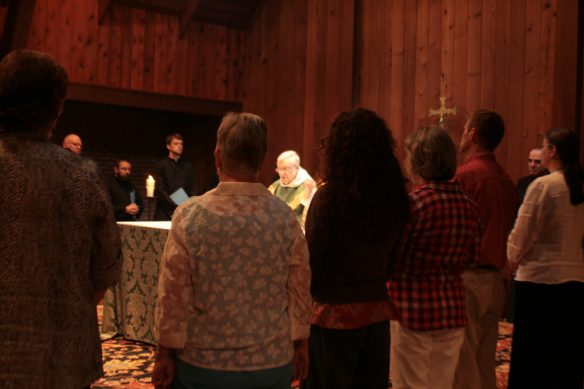 There are many stories of kings who go about their kingdom in disguise, usually as a beggar. In such cases, whatever a subject of the king should do to that “beggar” would literally be done to the king himself. This may not have happened much in real life but it did happen when God became a true human being. Whatever anyone did for or to a certain itinerant preacher in Palestine was indeed done to God. It is important to note that in neither scenario did anyone consciously see the king or see God; one saw the beggar or the itinerant preacher.
There are many stories of kings who go about their kingdom in disguise, usually as a beggar. In such cases, whatever a subject of the king should do to that “beggar” would literally be done to the king himself. This may not have happened much in real life but it did happen when God became a true human being. Whatever anyone did for or to a certain itinerant preacher in Palestine was indeed done to God. It is important to note that in neither scenario did anyone consciously see the king or see God; one saw the beggar or the itinerant preacher.
The concluding parable of Matthew 25, the final teaching of Jesus in that Gospel, shows Christ as a king going about in disguise. Or does it? Neither the “sheep” who are welcomed into the Kingdom nor the “goats” who are sent to “the bad place” thought they were either serving or rejecting their heavenly king. What both the sheep and the goats saw—or failed to see—were vulnerable people who were starving or naked or in prison. This teaching has inspired a spirituality of “seeing” Jesus in vulnerable people, the rejects of society, the ones who are normally seen as the “goats,” if seen at all. But what is at stake is seeing the people, seeing their vulnerability, and showing one has seen them by serving them. After St. Martin had famously cut his cloak in half to give half to a freezing man, he had a dream of Jesus wearing that half of the cloak. But at the time, what Martin saw was the freezing man, and that was enough.
In his new book Stranger God: Meeting Jesus in Disguise, the therapist Richard Beck explores the ways of seeing and not seeing vulnerable people. He suggests that Jesus is prodding us to widen our affections beyond the friends and family we are comfortable with and move beyond our comfort zones. Beck covers several obstacles to such expansion, among them disgust, contempt and fear. Then comes the rub: how do we expand our affections? Beck searched through many books on spirituality for an answer until he came across the teaching of the Little Way” in the writings of St. Thérèse of Lisieux. Beck says that this “little way” seems simple until one tries it. The “little way” begins with noticing. Thérèse says that she noticed that some sisters in her Carmelite convent were saintly and popular and other sisters were difficult and ignored as much as possible: a separation of sheep and goats. Thérèse then had to move beyond her comfort zone and seek out the neglected, difficult sisters. It happens that Fr. Anthony, my novice master, taught us the “little way” of St. Thérèse as a means of teaching us how to live the Benedictine life which also depends on attending to the same details of everyday life in community. I particularly remember Fr. Anthony’s reading about Thérèse pushing the wheelchair of a crabby sister who constantly complained about every little bump in the way. When Benedict instructs us to pay particular attention to the sick and the poor in reference to Matthew 25, Benedict is telling us that being obedient to Christ entails being obedient to the needs of vulnerable people.
Edifying as this teaching of serving Christ through serving vulnerable people is, the grim sending away of the “goats” who failed to serve the vulnerable is disturbing. One way to understand this grim ending is to suggest that if our hearts shrink to the vanishing point so that we become permanently blind to the plight of vulnerable people, we end up in our own darkness. This is a salutary warning. But perhaps these “goats,” like the crabby sister in the wheelchair, are people who also need to be served through the “little way.” I wonder if it might be emotionally easier to feed a hungry person than to care for a person who denies food to the hungry. It seems to me that any “sheep,” like the Lamb of God, would want to save all of the “goats.”
[These thoughts are developed in a blog post by Lindsey Lopez-Paris and a sermon in 2014 by Tom Truby titled “The World Makes Sheep and Goats.]
Advertisements Share this:





